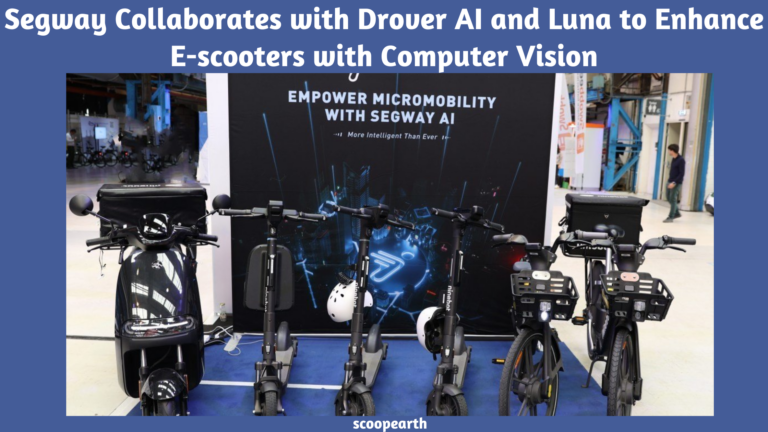10 June 2023, Bengaluru, India
Segway-Ninebot is collaborating with Drover AI and Luna Systems, two businesses that use computer vision technology to identify and rectify inappropriate electric scooter riding, to integrate their technologies into its AI-enabled e-scooters.
The collaborations, which were revealed at the micro-mobility Europe conference in Amsterdam, represent something of a turning point for Segway. Around this time last year, the scooter manufacturer introduced the S90L, an AI-powered scooter, as the vertically integrated answer to scooter advanced rider assistance systems (ARAS). Shared micro-mobility operators were provided with a uniform platform that encompassed everything from the scooter itself to intelligent sensors to computer vision models, as opposed to installing third-party hardware and software systems onto scooters.
Segway’s offer came as practically all of the main e-scooter companies started installing scooter ARAS, which forbids riding on sidewalks, to win over cities.
According to Tony Ho, Segway’s vice president of business development, despite selling around 20,000 S90Ls to shared micro-mobility companies (mostly Lyft), the business concluded that it was overstretching itself. Like many tech firms, Segway spent the previous year reassessing its strategies and came away with a reaffirmed determination to concentrate on its core competencies. For Segway, this entails producing the hardware and collaborating with suppliers of the software.
Based in Los Angeles By testing and marketing attachable IoT modules to businesses like Spin, Voi, Helbiz, Beam, Fenix, and others, Drover and Dublin-based Luna have been at the forefront of the camera-focused scooter ARAS trend.
The computer vision system must be trained to understand the city, the pavements, the parking structures, and the bike lanes before AI-based scooters can be used in new places, according to Ho, who spoke with TechCrunch. As a result, “there is a huge amount of data you need to collect in every city where you deploy these scooters, and you also have to build the model in a way that’s suitable for every city.”
The startups and the non-exclusive partnerships will function in two different ways. Customers who buy S90L models, which come with cameras, processors, CPUs, and GPUs, can select to have either Drover’s or Luna’s scooter ARAS algorithms implemented straight out of the factory. Segway’s software will also be accessible, but the firm won’t put any emphasis or effort into advertising it.
Ho remarked, “It’s almost like we’re creating a little app store for our scooters. “We’re opening the platform to developers, startups, and operators so that they can essentially take our vehicles, train them with their algorithm, and use us as the computer on which to run their algorithm,” the company said.
Operators without S90L models who want scooter ARAS capability will have the option of retrofitting PilotEdge, Segway’s new modular AI system. PilotEdge, into which Drover or Luna’s technology can be integrated, is simply an add-on box with all of the required sensors for scooter ARAS.
Segway has a partnership with Drover as its preferred software partner, while it is open to any software that its operator clients pick. Similar to Segway, Drover will advise clients to buy its hardware platform for standalone computer vision modules as well as integrated vehicles.
By collaborating with Segway, Drover, and Luna can concentrate on software development and collecting monthly payments for scooter ARAS rather than worrying about creating and deploying hardware. This is fortunate since Ho notes that “hardware is hard.” Building and storing merchandise that might not sell is expensive, and for small firms, dealing with supply chains can significantly reduce profitability.
“It’s dirty work, but we can do it because we have a huge scale,” said Ho. Therefore, if we pool everyone’s demand, we can do it at a larger scale and a lower cost.
[Source: Techcrunch.com]
As a highly skilled and experienced content writer, I have a passion for creating engaging and informative content that connects with audiences and inspires them to take action. With over 1 year of experience in the industry, I have honed my writing skills to craft content that is both effective and SEO-friendly.
